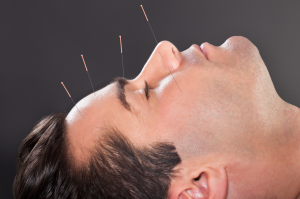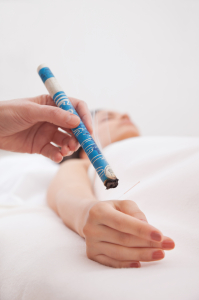The first consultation and subsequent treatments
During your first visit you will be asked a lot of questions about yourself to establish a diagnosis. A diagnosis is the foundation of treatment. By finding out about you and your health, a decision can be made on how to best treat you. This results in a treatment plan which forms the basis for the following treatments.
The diagnosis
You will be asked quite a few questions during your diagnosis. However, the main intention is to listen to what you have to say.
In Chinese medicine the underlying causes of your complaint are diagnosed by asking about your signs and symptoms. You’ll be asked questions about your main complaint and your general health. This involves among others your sleep, your appetite, and your perspiration. Other questions may appear less relevant to your health but are equally important. You may for example be asked whether you prefer hot or cold weather or what time of the day your energy levels are better or worse. This enables a complete and individual made-to-measure diagnosis of you.
In addition there will also be a physical examination where your pulses will be felt at the wrists and your tongue will be looked at. Both can tell a lot about your internal condition.
In the treatment room
At the beginning of each treatment your progress will be checked and some new information may be gathered. According to this diagnosis the treatment principles will be decided on. These are the guidelines for treatment which make it possible to choose the most appropriate combination of acupuncture points based on your needs. Treatment is then carried out by inserting very fine, sterilized stainless steel needles into these points.
Other treatment techniques such as moxibustion (the burning of mugwort -a small spongy herb – near the body to create heat for therapeutic purposes); cupping (the creation of a vacuum inside one or several cups placed on the body – most often on the back – to increase circulation); guasha (the repeated scraping of the skin surface with a tool made from horn or jade to increase the circulation); or tuina (Chinese medical massage/bodywork) may be carried out in addition to (or sometimes instead of) your acupuncture treatment if they benefit your progress.
During the actual treatment you will normally lie on a treatment couch although in some cases you may sit on a chair.
The needles are sometimes withdrawn after just a few minutes or they may be left in place for 20-30 minutes depending on the diagnosis and the individual condition/constitution of the patient.
After the needles have been removed your pulses will be felt again to check the effect of the treatment.
After the treatment – How often do I need to come back?
There is some variation in how people feel after acupuncture. Some feel immediate improvement while other can take longer to notice changes. Constant monitoring how the treatment is progressing is very important. Each patient’s health improves differently.
How often you come for treatment depends on your condition. You may start with weekly treatments if you suffer from a chronic complaint. As your condition improves you may then come every two weeks, and subsequently every three or four weeks. Once you are better, you can be checked at regular intervals to keep yourself well and you may even gain further improvements. This can be compared to having a regular check-up with your dentist.
If you start with an extremely acute condition (acute pain; infection; or other injury) you might initially have sessions every day or every other day. The course of treatments is normally much shorter in such cases and the patient can be discharged quickly.
As a general rule acute conditions tend to heal quickly while chronic ones take much longer. It is said that it takes about a month of treatment for every year that you have been ill.



